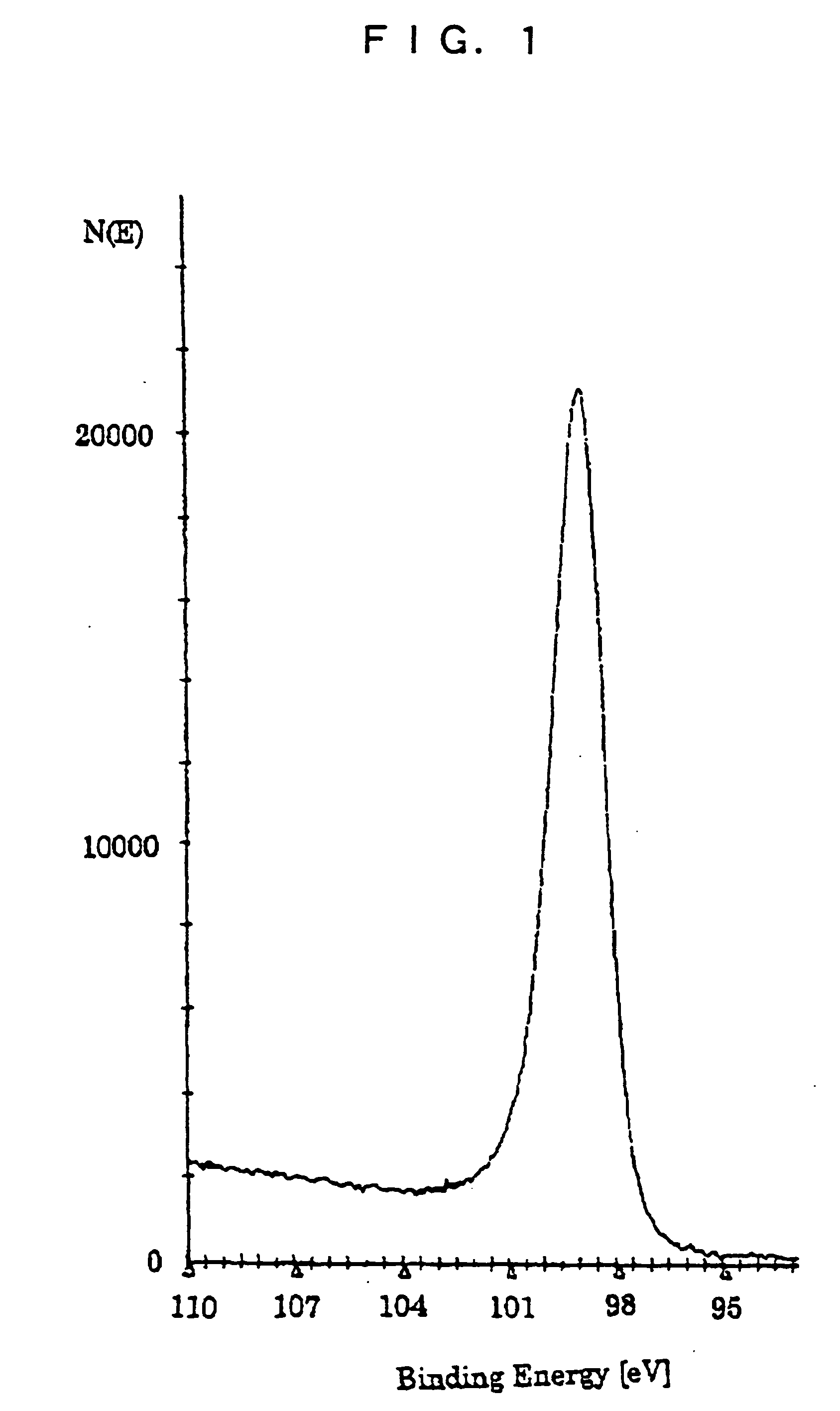Silane composition, silicon film forming method and solar cell production method
a technology of silicon film and composition, which is applied in the direction of final product manufacturing, sustainable manufacturing/processing, other chemical processes, etc., can solve the problems of poor productivity, reduced production yield, and difficulty in forming a film uniform in thickness, and achieve the effect of large area and easy forming of silicon films
- Summary
- Abstract
- Description
- Claims
- Application Information
AI Technical Summary
Benefits of technology
Problems solved by technology
Method used
Image
Examples
synthesis example 1
[0155] After the inside of a 3-liter four-necked flask equipped with a thermometer, cooling condenser, dropping funnel and stirrer was substituted by argon gas, 1 liter of dried tetrahydrofuran and 18.3 g of metal lithium were fed to the flask and bubbled with the argon gas 333 g of diphenyl dichlorosilane was added to this suspension by a dropping funnel under agitation at 0 EC, and then stirring was continued at room temperature for 12 hours after the end of addition until metal lithium disappeared completely. The reaction mixture was poured into 5 liters of iced water to precipitate a reaction product. This precipitate was separated by filtration, washed with water well and then with cyclohexane, and vacuum dried to obtain 140 g of a white solid 100 g of this white solid and 1,000 ml of dried cyclohexane were fed to a 2-liter flask, 4 g of aluminum chloride was added, and dried hydrogen chloride gas was bubbled at room temperature under agitation for 8 hours. Separately, 40 g of ...
synthesis example 2
[0156] When 10 g of cyclpentasilane obtained in Synthesis Example 1 was added to a 100 ml flask in an argon atmosphere and exposed to light from a 500 W high-pressure mercury lamp for 30 minutes under agitation, a white solid was obtained. The obtained white solid was insoluble in toluene and cyclohexane. When 100 g of cyclopentasilane obtained in Synthesis Example 1 was added to this white solid, an achromatic and transparent solution was obtained.
synthesis example 3
[0157] After the inside of a 1-liter four-necked flask equipped with a thermometer, condenser, dropping funnel and stirrer was substituted by argon gas, 500 ml of dried tetrahydrofuran and 9 g of metal lithium were fed to the flask and bubbled with the argon gas. A mixture of 126 g of diphenyl dichlorosilane and 25 of boron tribromide was added to this suspension by a dropping funnel under agitation at room temperature. After a reaction was continued until metal lithium disappeared completely, the reaction mixture was poured into iced water to precipitate a reaction product. This precipitate was separated by filtration, washed with water well and dried to obtain 90 g of a silicon compound having a phenyl group and boron 90 g of this compound was dissolved in 500 ml of toluene, 4 g of aluminum chloride was added to the solution, and dried hydrogen chloride gas was bubbled under cooling with ice and agitation for 8 hours. Separately, 12 g of lithium aluminum hydride and 250 ml of diet...
PUM
| Property | Measurement | Unit |
|---|---|---|
| wt % | aaaaa | aaaaa |
| particle diameter | aaaaa | aaaaa |
| particle diameter | aaaaa | aaaaa |
Abstract
Description
Claims
Application Information
 Login to View More
Login to View More - R&D
- Intellectual Property
- Life Sciences
- Materials
- Tech Scout
- Unparalleled Data Quality
- Higher Quality Content
- 60% Fewer Hallucinations
Browse by: Latest US Patents, China's latest patents, Technical Efficacy Thesaurus, Application Domain, Technology Topic, Popular Technical Reports.
© 2025 PatSnap. All rights reserved.Legal|Privacy policy|Modern Slavery Act Transparency Statement|Sitemap|About US| Contact US: help@patsnap.com



